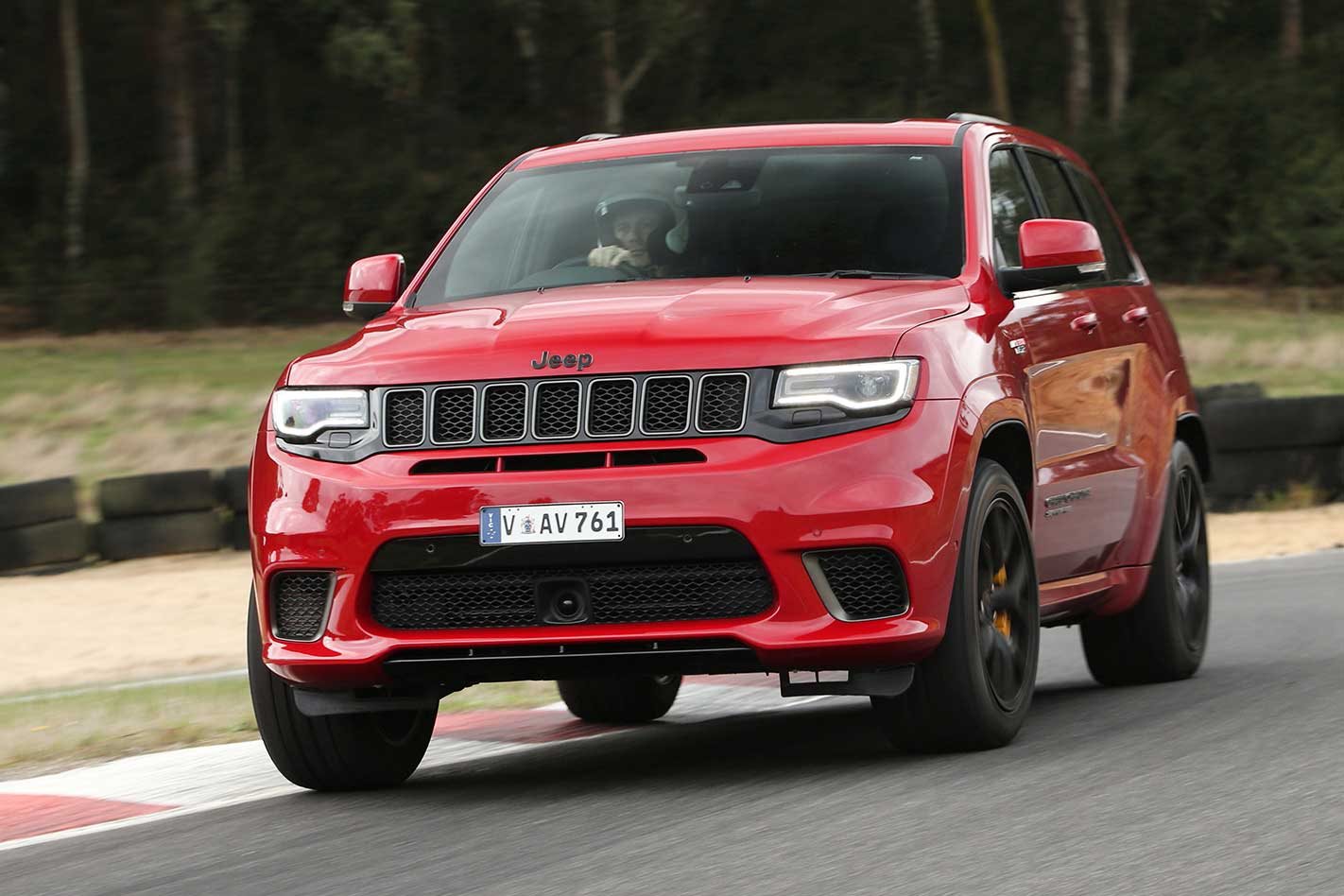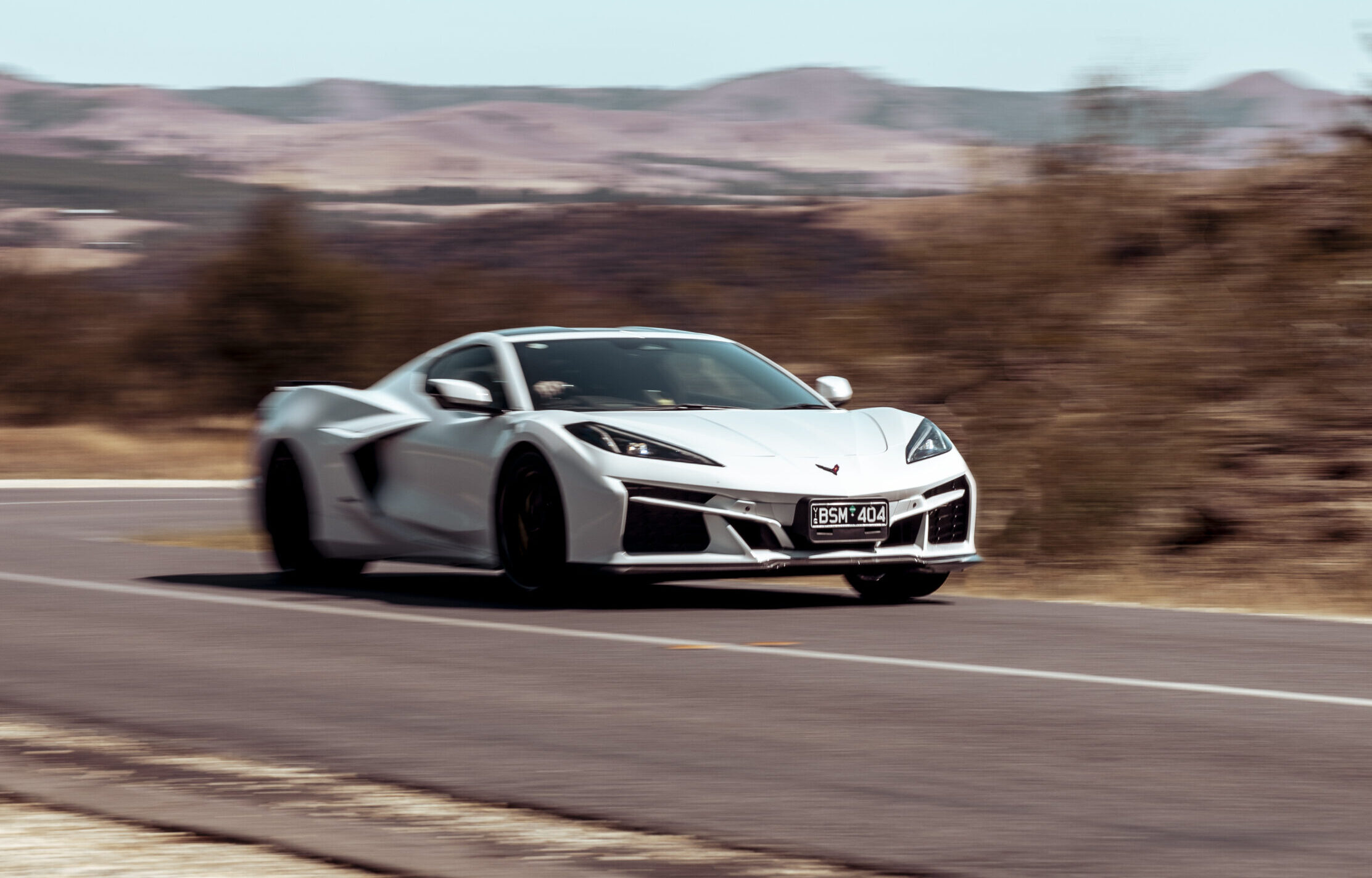Looking back, anyone would say it’d be silly to inject 522kW and 868Nm into a Jeep Grand Cherokee.
They’d repeat their disgust at why something with a roll-centre higher than a Labrador would be encouraged to unleash that around a racetrack. But that was the exact brief for Jeep’s new Trackhawk. And the result actually makes physics look like the silly one.
A handful of laps at Phillip Island were enough to confirm the Trackhawk as brutal in a straight line and capable at the fast, flowing circuit. Yes, this 2.43 tonne behemoth can corner hard. Without rolling over.
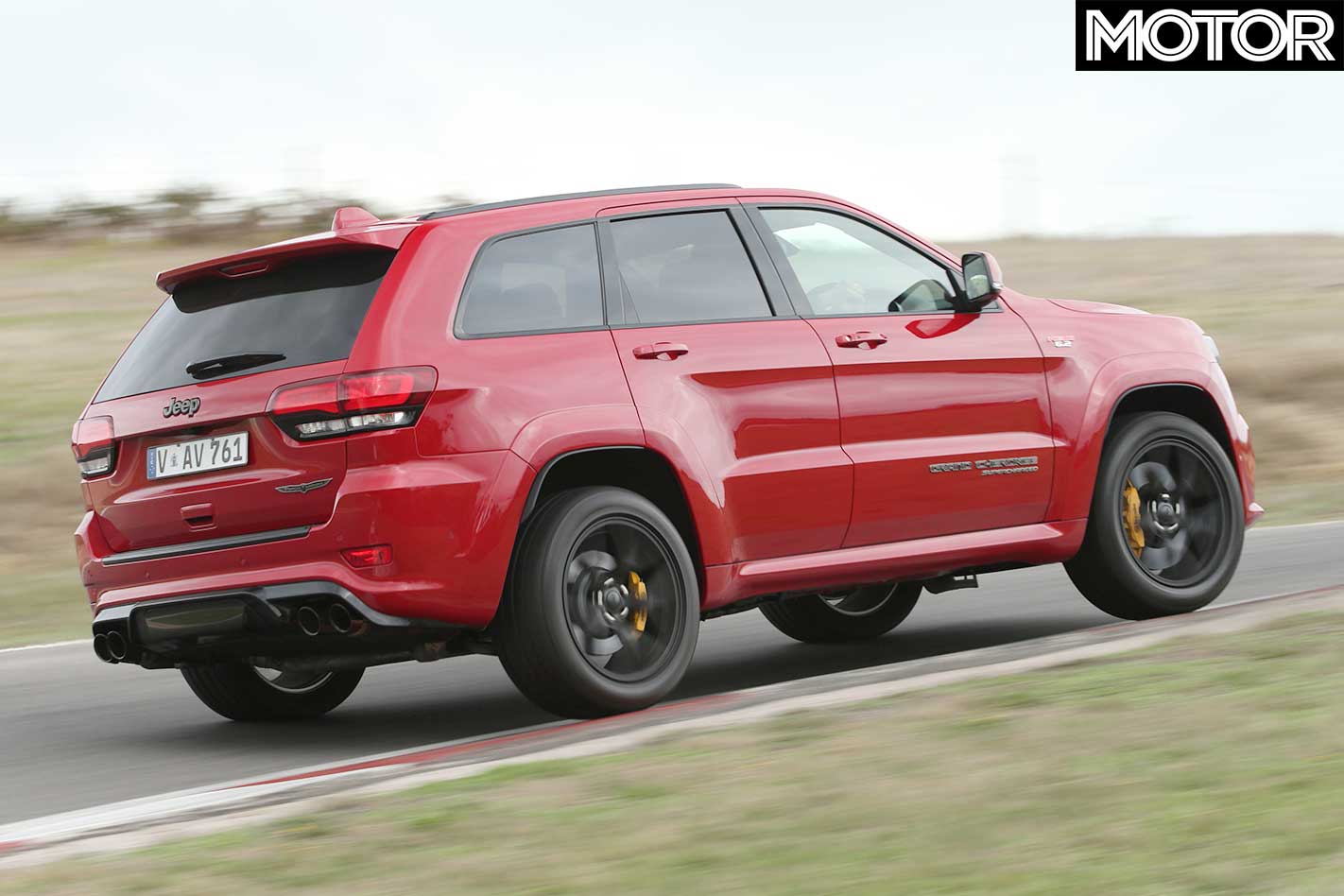
Naturally, boosting a 6.2-litre V8 is going to unlock a lot of power. But 522kW and 868Nm is an other-worldly achievement. On top of being 48kW and 53Nm more than HSV could wring from the LS9 in its GTSR W1, it’s also the most powerful V8 (or SUV) on sale.
To generate that much grunt, Jeep pinched the Dodge Challenger Hellcat’s 6.2-litre Hemi V8. It’s a heavily re-engineered version of the GC SRT’s ‘apache’ 6.4-litre. It features a forged steel crankshaft that cuts stroke measurements by 4.5mm. While forged alloy pistons drop its compression ratio to 9.5:1 and ready it for a 2.4-litre twin-screw supercharger to supply 11.6psi of boost.
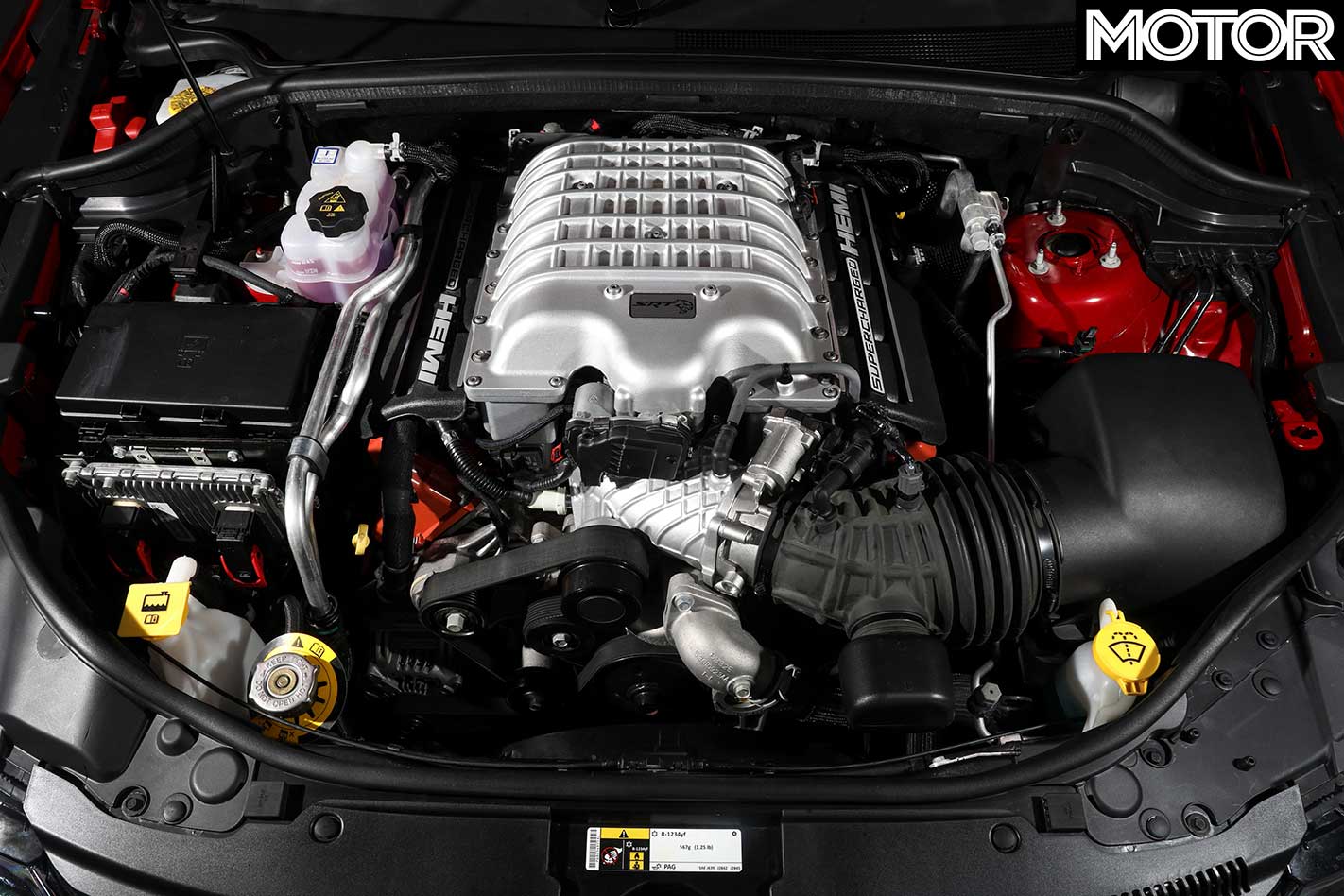
Pointed slightly downhill on the circuit’s straight, the Trackhawk lifts on its rear haunches like a startled grizzly. As it accelerates it produces more G-force than sports cars can generate in corners. The on-board Performance Pages App, which can track everything from your reaction times to oil pressure, said we hit 100km/h from rest in 3.6sec (sans roll-out). Then in 3.9sec without launch control.
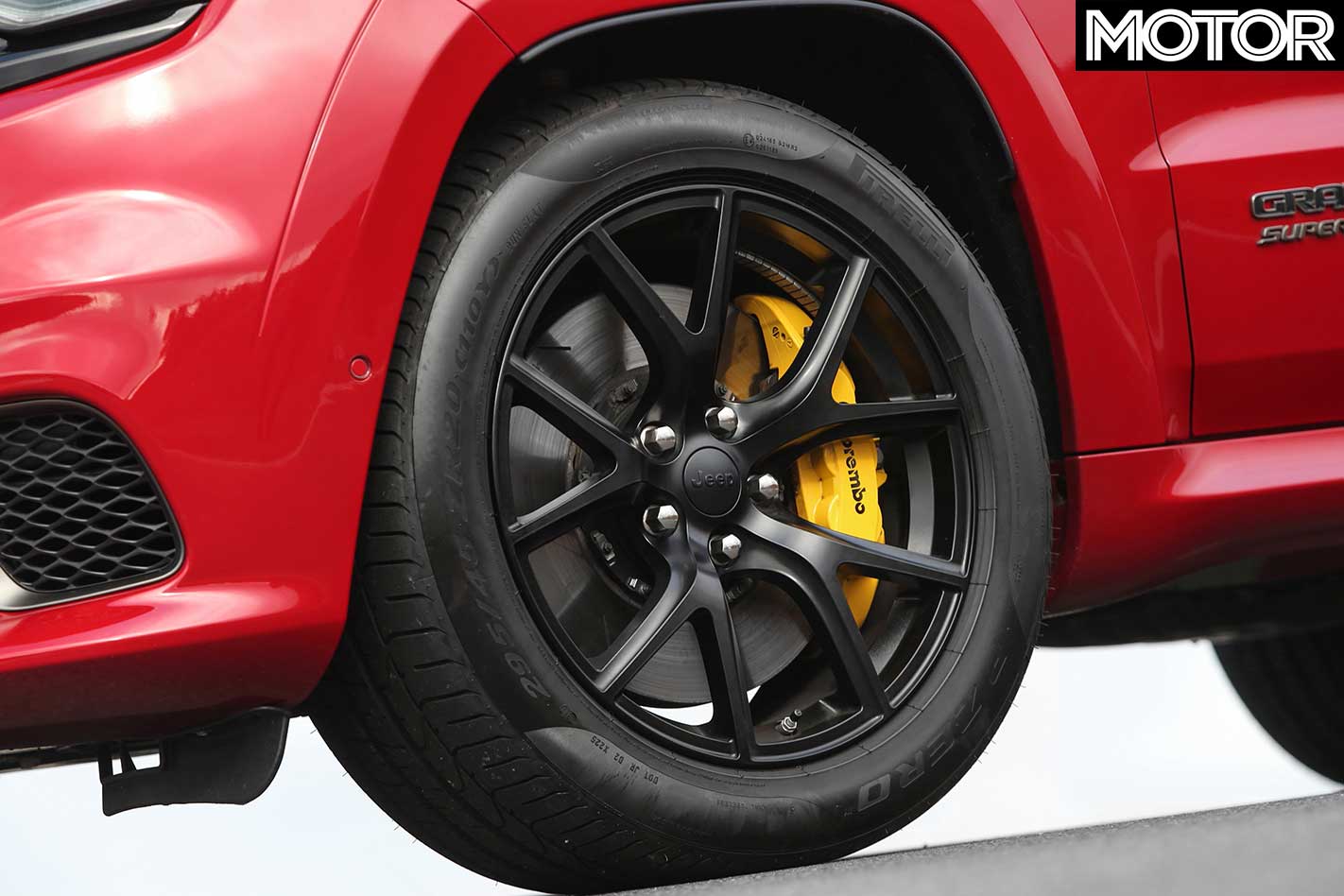
As you’d expect, the Trackhawk’s handling is a mixed bag. Jeep’s stiffened the springs coiled around its adaptive dampers and fitted reinforced Pirelli P Zero run flats. They add the lateral stability to match the grip generated by those massive 295mm-wide tread patches. New 20-inch forged wheels feature, too, dropping 5kg per corner and improving its initial responses.
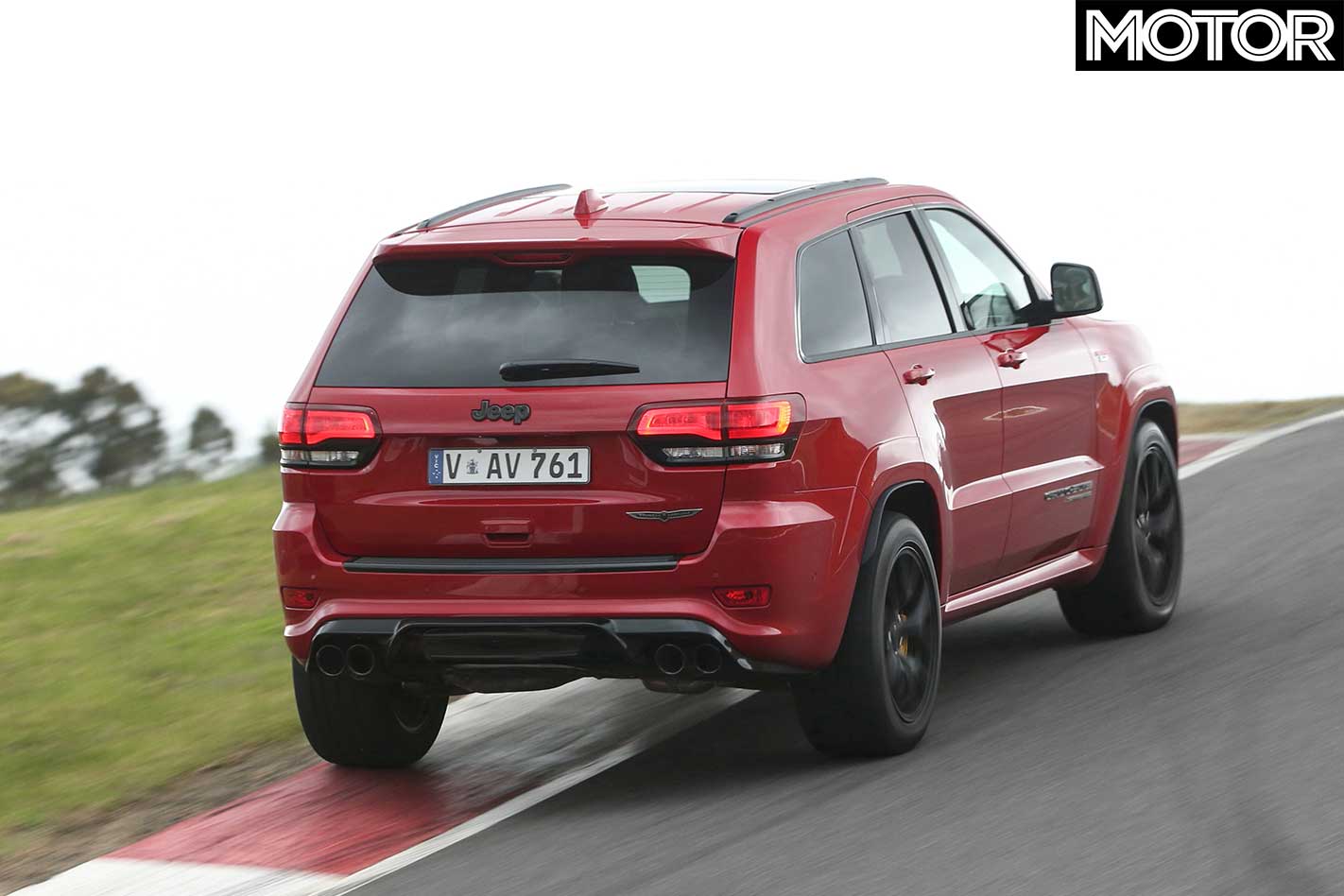
What it lacks for drifting it redeems in musical talent. The Trackhawk announces itself with a strong supercharger whine and leaves a furious, anti-social blare in its wake. It’s terrifying and enchanting at the same time and throbs like a Merlin Spitfire engine. From the inside Jeep’s leather-padded interior keeps the noise at palatable levels except, thankfully, for the addictive ‘burp’ on upshifts.
There’s extra metal accents and a new 19-speaker Harmon Kardon audio system inside, but it remains unchanged for the most part. The $43,800 jump up from an SRT is all about that engine, which remains your sole option for driving a Hellcat engine in right-hook with a factory warranty.

From its bullish looks to its hellish noise, the Trackhawk is clear about what it is: ostentatious, excessive, ridiculous.
It comes with a five-year warranty which Jeep will review under a ‘case-by-case’ basis in ten-tenth environments, but our short experience in the Trackhawk suggests that powertrain will outlast civilisation. We can’t say the same for its brake pads.
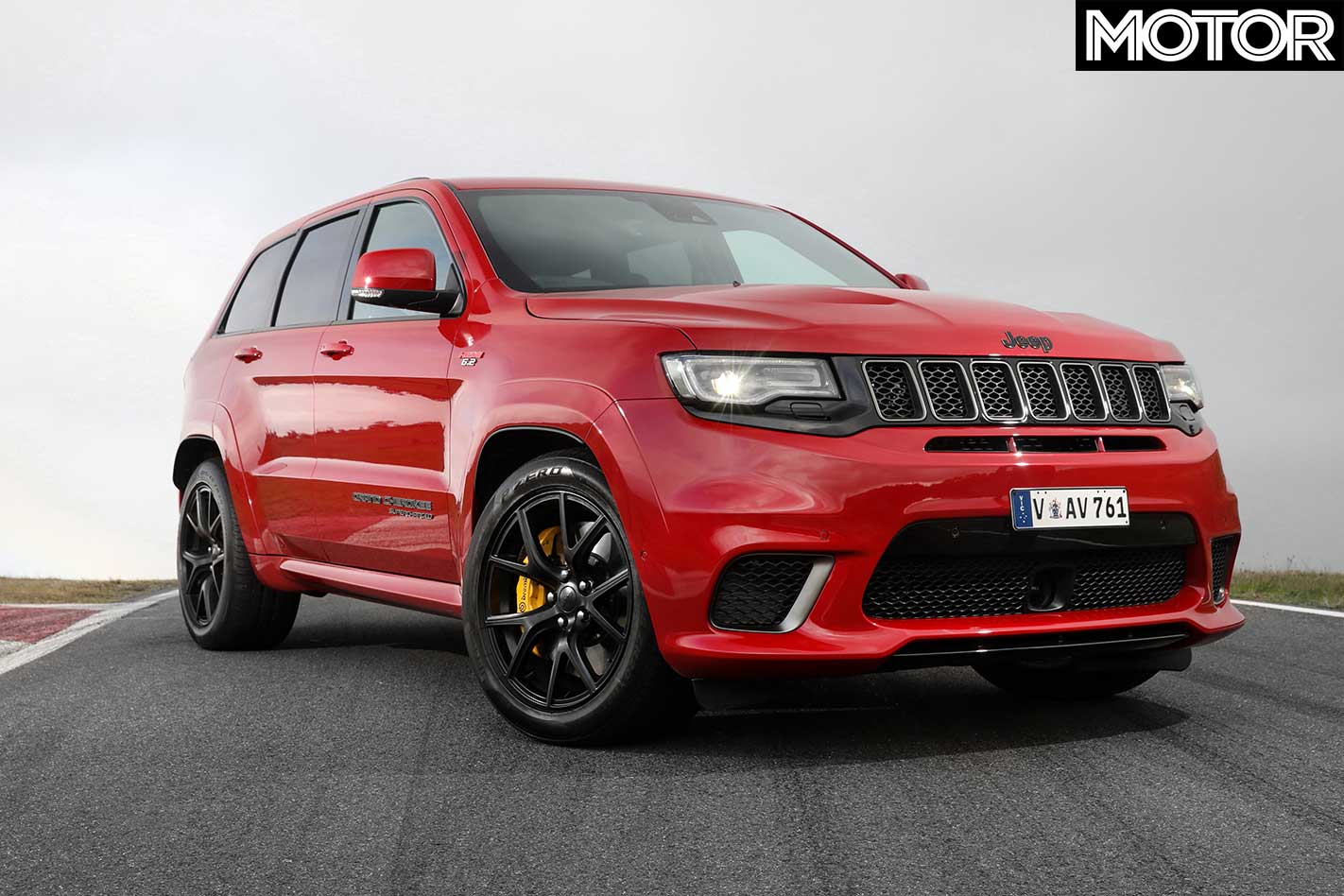
We’d take our initial delight with a pinch of salt, though. We haven’t driven the Trackhawk nearly enough to have a firm idea on how it rides, know the true depths of its thirst, or learn that brute of an engine’s daily manners. But we’re surprised in how much we like the Grand Cherokee Trackhawk after such a short time.
Then again, this is a 522kW, ground shaking five seater that can outrun a Porsche 911. We must have been silly to have doubted it at all.
2018 JEEP GRAND CHEROKEE TRACKHAWK SPECS Engine: 6168cc OHV V8, supercharger, 16v Power: 522kW @ 6000rpm Torque: 868Nm @ 4800rpm Transmission: 8-speed automatic, electro-mechanical locking rear differential, all-wheel drive Weight: 2433kg 0-100km/h: 3.7sec (claimed) Top speed: 289km/h (limited) Price: $134,900 Rating: 4 out of 5 Stars
Pluses +: Menacing soundtrack; grip; brutal acceleration; reasonable price
Minuses -: Hellish thirst; braking instability; conceptually flawed


